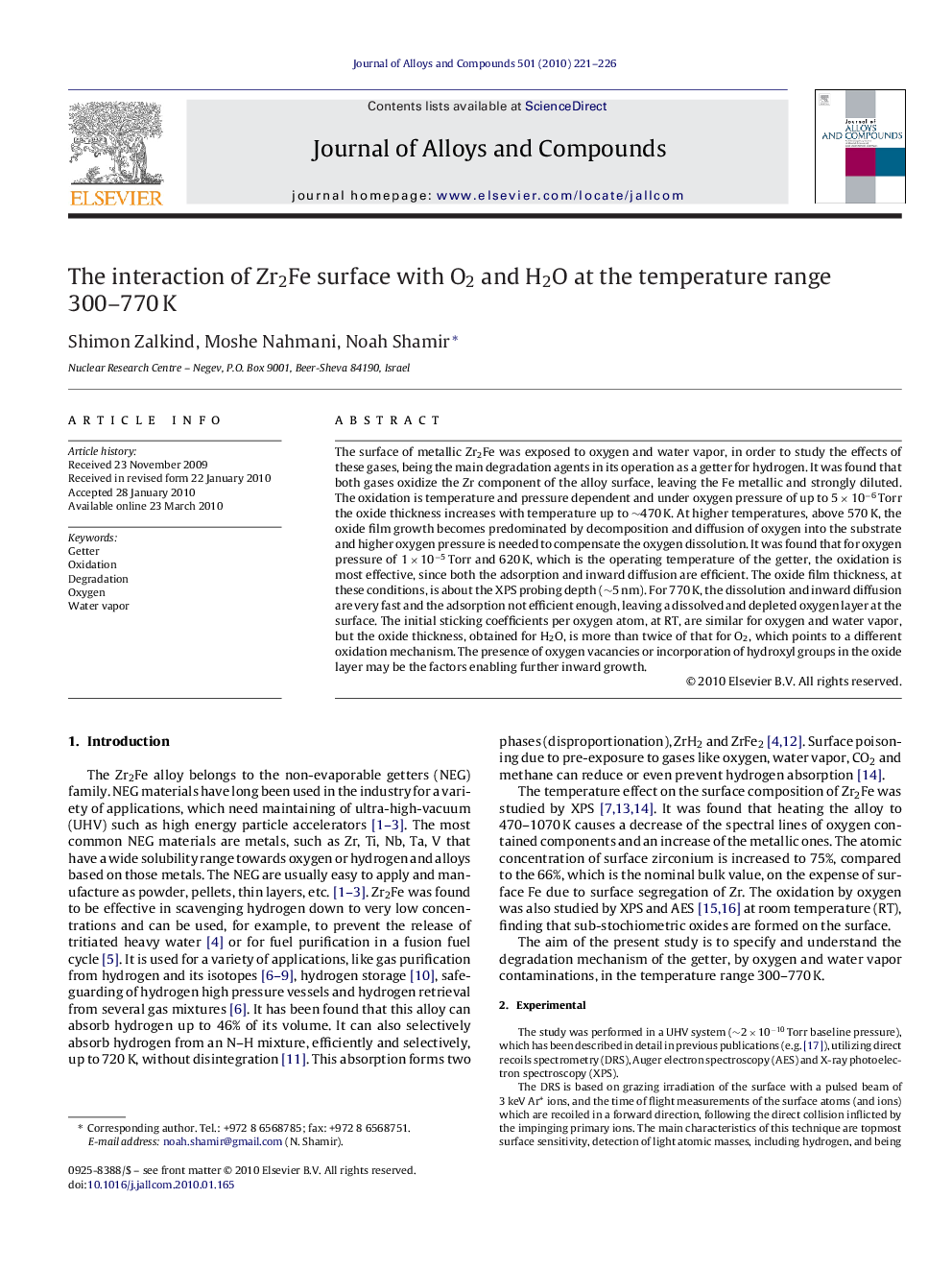| Article ID | Journal | Published Year | Pages | File Type |
|---|---|---|---|---|
| 1620196 | Journal of Alloys and Compounds | 2010 | 6 Pages |
Abstract
The surface of metallic Zr2Fe was exposed to oxygen and water vapor, in order to study the effects of these gases, being the main degradation agents in its operation as a getter for hydrogen. It was found that both gases oxidize the Zr component of the alloy surface, leaving the Fe metallic and strongly diluted. The oxidation is temperature and pressure dependent and under oxygen pressure of up to 5Â ÃÂ 10â6Â Torr the oxide thickness increases with temperature up to â¼470Â K. At higher temperatures, above 570Â K, the oxide film growth becomes predominated by decomposition and diffusion of oxygen into the substrate and higher oxygen pressure is needed to compensate the oxygen dissolution. It was found that for oxygen pressure of 1Â ÃÂ 10â5Â Torr and 620Â K, which is the operating temperature of the getter, the oxidation is most effective, since both the adsorption and inward diffusion are efficient. The oxide film thickness, at these conditions, is about the XPS probing depth (â¼5Â nm). For 770Â K, the dissolution and inward diffusion are very fast and the adsorption not efficient enough, leaving a dissolved and depleted oxygen layer at the surface. The initial sticking coefficients per oxygen atom, at RT, are similar for oxygen and water vapor, but the oxide thickness, obtained for H2O, is more than twice of that for O2, which points to a different oxidation mechanism. The presence of oxygen vacancies or incorporation of hydroxyl groups in the oxide layer may be the factors enabling further inward growth.
Related Topics
Physical Sciences and Engineering
Materials Science
Metals and Alloys
Authors
Shimon Zalkind, Moshe Nahmani, Noah Shamir,
